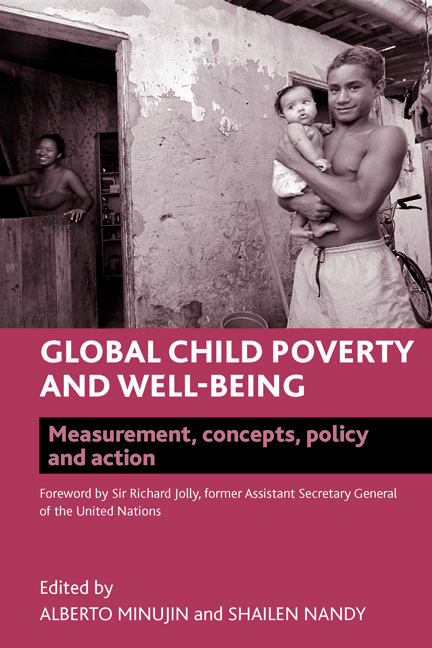fifteen - Multidimensional child poverty in Haiti
Published online by Cambridge University Press: 07 September 2022
Summary
Introduction
Haiti has long been a beacon of hope for the poor and oppressed peoples of the world. It was the first and only country to have a successful slave-led revolution that resulted in independence from a colonial power. The Haitian Revolution of Independence between 1791 and 1804 has been described by many eloquent authors (see, for example, James, 1938; Dupuy, 1989). At the time of the revolution, Haiti was one of the most productive and wealthiest countries on the planet. Since gaining its independence, however, the Republic of Haiti has been plagued by a history of poverty, political unrest and natural disasters (Farmer, 2003). The devastating earthquake of 12 January 2010 struck a country that was already one of the poorest and least developed in the world. This chapter uses data on child poverty and deprivation created using the ‘Bristol Approach’ (see Chapter Four, this volume) to show that, in the years before the earthquake, hardly any progress had been made in reducing poverty and deprivation among children in Haiti. The work represents the first ever study of child poverty in the country, and its findings were disheartening, since it was hoped that the benefits of lifting international sanctions on Haiti would be manifested most apparently in positive outcomes for children.
Despite the severe impact of poverty in Haiti, the number of studies on this issue is still limited. The results should be directly relevant to policy makers as methods used are based on internationally agreed standards and definitions of poverty and deprivation.
Overview of child poverty in Haiti
Haiti is one of the poorest and least developed countries in the world, and the poorest nation of the Americas. Already afflicted by endemic poverty and extreme socioeconomic disparities, the country experienced a near apocalyptic event when it was struck by a massive earthquake on 12 January 2010. The catastrophe undoubtedly heightened the vulnerability of children, many of who had already been living in dire poverty.
The earthquake
At 4.53pm, on 12 January 2010, Haiti was hit by a magnitude 7.0 earthquake. Aftershocks of magnitude 5.9 and 5.5 followed, which also caused immense structural damage and loss of life.
- Type
- Chapter
- Information
- Global Child Poverty and Well-BeingMeasurement, Concepts, Policy and Action, pp. 357 - 378Publisher: Bristol University PressPrint publication year: 2012

